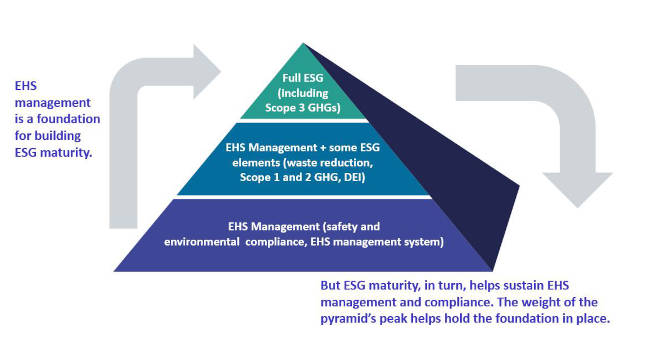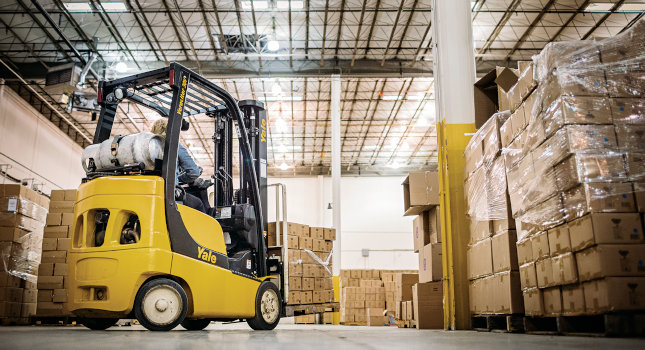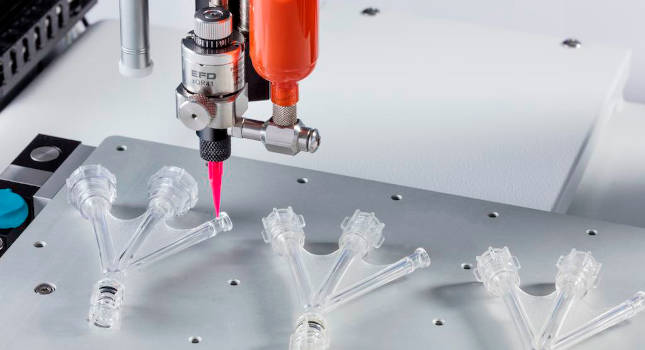An effective clean-in-place design should be built with a facility's specific needs in mind while reducing contamination and water consumption.

Safety insights
- An effective clean-in-place (CIP) system improves sanitation and enhances food safety while simplifying the cleaning process and reducing downtime.
- Effective CIP design reduces water contamination and ensures adequate flow and drainage.
A clean-in-place (CIP) system is a cost-effective and time-saving tool that rinses and washes the inside surfaces of food processing piping and equipment without mechanical disassembly. When designed well, a CIP system improves sanitation and enhances food safety while simplifying the cleaning process for plant operators and reducing downtime. It automates what has traditionally been a laborious and time-consuming manual process of disassembling the piping, hand-cleaning each component and reassembling equipment.
In addition to lost revenue from halted production, improperly cleaned equipment can spread foodborne contaminants from batch to batch, which is dangerous to consumers and can lead to recalls that directly impact a company’s bottom line and reputation.
If you’re considering investing in a CIP system for your facility, it’s important to ensure you’re getting a design that is reliable and up-to-date. Your process design team should consider the overall needs of your operation, including changeover efficiency, water conservation and how the design will affect the complexity of the system.
For a CIP system to be effective, equipment and piping should be designed for easy cleaning and installed to hygienic standards. Piping should be free draining, free of “dead legs,” and the water used for the final rinse should meet product contact specifications.
Seven essential design tips and considerations
It’s important to consider a few things when designing a CIP system to fit a facility:
1. Understand your facility’s specific sanitation needs.
Ask yourself the following questions: How often are you going to clean? What are you going to clean? Are there any specific requirements? There is no one-size-fits-all approach to sanitation because some manufacturers produce food products that present more difficult cleaning challenges than others. For example, a product with high levels of sweeteners and artificial colors may require a longer wash sequence at a higher temperature than a sugar-free beverage. Therefore, identifying exactly what substance is being cleaned is critical.
2. Balance system design and production schedule.
It’s important to identify the size of the CIP system needed and how it will impact a production schedule. Size refers to more than just the capacity of the tanks; it also includes the number of process lines, tanks and areas (referred to as “circuits”) that can be cleaned simultaneously. Consider the number of circuits that must be cleaned, the frequency of cleaning, the total volume of the circuit, the flow rate required and the types of chemicals needed to properly do the job. Different systems have varying numbers of steps to achieve proper cleaning based on the product being cleaned. It’s crucial to factor cleaning frequency into the production schedule.
It’s also important to consider any required changeover processes in your CIP planning. In some applications, such as making fruit juice, a facility may be able to switch from Flavor A to Flavor B without any cleaning because Flavor B is more pungent than Flavor A; but switching from Flavor B back to Flavor A may require running a rinse cycle or other method of cleaning. If the following product is dissimilar, such as going from a carbonated soft drink to an energy drink, this typically requires a full system cleaning.
Cleaning is also needed when allergens are involved to avoid cross-contamination. Operating with a production schedule that takes cleaning requirements into consideration can reduce the burden on the CIP system and increase production time.
3. Mitigate the risk of cross-contamination.
If your food and beverage facility produces different types of products, you must take extra precautions to mitigate cross-contamination, especially when handling allergens or switching from raw to ready-to-eat (RTE) products. Many facilities install separate CIP systems for RTE and raw production areas. When cleaning for allergens, it’s important to ensure water and chemicals are not reused, which can potentially spread allergens to other portions of the processing facility.
4. Reduce water and chemical consumption.
Water usage has become an increasingly critical consideration in facility operations as natural resources become more scarce. Introducing product recovery methods into CIP can increase product yield and reduce rinsing times and water usage. These methods can include pigging, where a pressurized plug is pushed through the line, and air blows, using dust-free air to clear a line. Adding a recovery tank to reuse the final rinse as a first rinse is another opportunity to save water with CIP.
Some CIP systems employ alternatives to the traditional chemical wash step such as ionized water, ozone or other disinfecting agents. These chemical alternatives vary in usefulness based on cleaning requirements but are expected to become more widely used in the future.
5. Ensure adequate flow and drainage.
CIP flow rates are based on piping size to ensure turbulence in lines. Turbulence improves the cleaning action of the fluid in the system, but requires high flow velocities. It’s common to see inadequately sized drainage on CIP systems, especially when multiple circuits are being cleaned simultaneously. Typically, drain valves on the process lines are opened for short bursts during CIP. For this reason, it is important that field drains are routed to properly sized hub or floor drains to prevent flooding and/or operators from getting sprayed with water and chemicals during the cycle. Flow rates through drain valves are reduced from the full CIP flow rate and can be sized accordingly.
6. Consider spatial limitations.
A plant can have a centralized CIP system that feeds to multiple locations with many circuits, or the system can be comprised of multiple smaller systems spread out across different areas of the plant. It often depends on the piping of the facility and what makes sense as far as budget and system complexity. While size and layout vary from plant to plant, it’s often better to have a single, central CIP system when possible. If you have two systems, for example, and need a 1,000-gallon tank for each of them, it may be less expensive to have a single 2,000-gallon tank at one location. Configuring all CIP circuits in one system can provide capital cost savings.
7. Understand cleaning and pipe configuration compatibility.
Once you identify how you will clean, ensure your cleaning solutions and pipe configuration are compatible. Elastomers (natural or synthetic elastic polymers) are often present in piping systems and process equipment, and can be damaged by the use of certain chemicals. You may need to upgrade your piping or elastomer if using a harsher cleaning solution. When planning to develop a CIP system from scratch, consider compatibility from the start.
Choosing the right partner
The right partner can mean the difference between an effective, durable CIP system and one that does not meet your needs and requirements. The first step should always be identifying all aspects of the process where CIP may be a value-added application. You should then discuss:
- The spatial and infrastructure requirements of the facility.
- All equipment and piping that must be cleaned, the flow rate and volume of each circuit.
- Available timeframes for cleaning based on the plant’s production schedule.
- Cleaning requirements based on past experience, industry standards and customer specifications. In the case of novel products, consult with chemical suppliers to prescribe the best cleaning parameters.
- Designing a CIP skid that can accomplish all equipment cleaning in the selected time frame.
Bring success to a facility through a well-designed CIP
There are many advantages to investing in a well-designed CIP system for your facility, including improved sanitation and food safety, as well as more efficient cleaning in general. Manual cleaning can quickly become a time-consuming task that results in lost revenue from halting production and creates a risk of spreading foodborne contaminants. The right CIP system, on the other hand, can improve the safety and efficiency of any food processing facility.
– Stellar is a CFE Media and Technology content partner.



